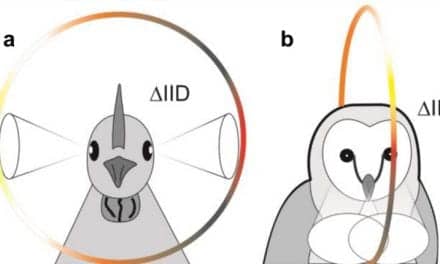If naked mole-rats were human, they would be prescribed hearing aids. With six mutations in genes associated with hearing, naked mole-rats can barely hear the constant squeaking they use to communicate with one another. This hearing loss, which is strange for such social, vocal animals, is an adaptive, beneficial trait, according to new findings published in the journal Current Biology. The results were published on the University of Illinois Chicago’s web portal, UIC Today.
Naked mole-rats are East African hairless mammals that are bald and wrinkly with buck teeth. They live in underground colonies and their social structure resembles that of bees—there are soldiers, workers, and a queen. A lot of cooperation is required for a mole-rat colony to function. Naked mole-rats need to decide where to dig, how to defend the colony, and how to convey the location of food sources, and much of this is accomplished by vocal communication.
“Naked mole-rats are constantly chirping and squeaking,” said Thomas Park, professor of biological sciences and neuroscience at the University of Illinois Chicago and one of the lead authors on the paper.

Park has been studying naked mole-rats for decades and has described some of their odd traits, such as their ability to thrive under conditions of low oxygen underground and their high tolerance for pain.
“We were curious about their hearing since they are so vocal, but research had suggested that their hearing is actually quite bad,” Park said.
Park and colleagues tested the hearing of mole-rats using technology similar to that used for testing human hearing. They performed an auditory brainstem response (ABR) test, during which electrodes placed on the scalp pick up signals indicative of sound being processed in the brain. The researchers found the signals were weak, confirming naked mole-rats have poor hearing. In fact, “their hearing is so bad that they would be candidates for hearing aids if they were people,” Park said.
Once the hearing loss was confirmed, Park and colleagues turned to the mole-rats’ genetics and found six mutations in genes associated with hearing loss in humans.
“The fact that there were so many of these mutations strongly suggests that these mutations were selected for because they are adaptive in some way,” Park explained.
The researchers also found the naked mole-rats lacked cochlear amplification, a process by which specialized cells in the inner ear help amplify sound signals before those signals are sent to the brain. Cochlear amplification is aided by cells called outer hair cells, which are located in the inner ear. Without proper functioning of these cells, sounds are severely dampened.
“If the naked mole-rats didn’t have these mutations, the constant noise they produce could actually kill the hair cells responsible for hearing,” Park said.
Hair cells receive auditory vibrations and send signals to the brain where they are interpreted as sound. Really loud sounds actually kill hair cells, which, unlike other types of cells, can’t regenerate. Park said this is why hearing loss in most mammals is progressive.
“Because the naked mole-rats lack functional cochlear amplification, the sounds they hear don’t ever get up to a level where they are lethal to hair cells, and so the naked mole-rats can withstand this constant cacophony without going totally deaf,” Park said. “They are the only mammals we know of that lack cochlear amplification.”
The new findings suggest that mole rats may be a good animal model to investigate hearing loss in humans.
Sonja Pyott and Marcel van Tuinen from the University of Groningen; Laurel Screven, Katrina Schrode, and Amanda Lauer from Johns Hopkins; Jun-Ping Bai and Joseph Santos-Sacchi from Yale University; Catherine Barone, Steven Price, and Anna Lysakowski from UIC; and Maxwell Sanderford and Sudhir Kumar from Temple University, are co-authors on the paper.
This research was supported by grants from the University of Groningen, National Institutes of Health (R01HG008146, GM0126567, R01DC016318, R01DC008130, R01DC17620, R01DC012347, T32DC000032), David M. Rubenstein Fund for Hearing Research, and National Science Foundation (1655494).
Original Paper: Pyott SJ, Van Tuinen M, Screven LA, et al. Functional, morphological, and evolutionary characterization of hearing in subterranean, eusocial African mole-rats. Current Biology.2020. DOI:https://doi.org/10.1016/j.cub.2020.08.035.
Source: UIC Today, Current Biology
Image: UIC Today




